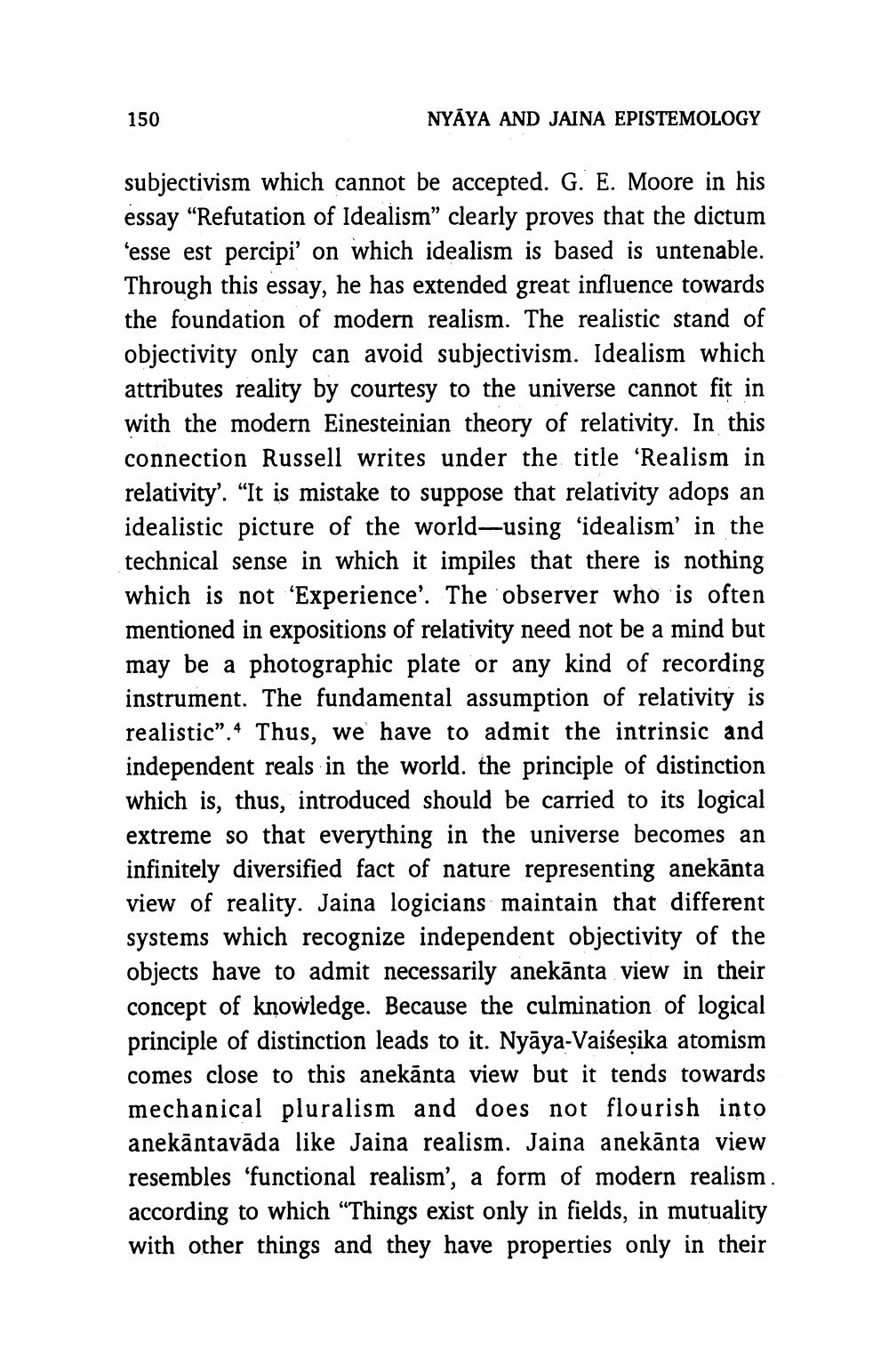________________
150
NYAYA AND JAINA EPISTEMOLOGY
subjectivism which cannot be accepted. G. E. Moore in his essay “Refutation of Idealism” clearly proves that the dictum 'esse est percipi' on which idealism is based is untenable. Through this essay, he has extended great influence towards the foundation of modern realism. The realistic stand of objectivity only can avoid subjectivism. Idealism which attributes reality by courtesy to the universe cannot fit in with the modern Einesteinian theory of relativity. In this connection Russell writes under the title 'Realism in relativity'. "It is mistake to suppose that relativity adops an idealistic picture of the world—using 'idealism' in the technical sense in which it impiles that there is nothing which is not 'Experience'. The observer who is often mentioned in expositions of relativity need not be a mind but may be a photographic plate or any kind of recording instrument. The fundamental assumption of relativity is realistic”. 4 Thus, we have to admit the intrinsic and independent reals in the world. the principle of distinction which is, thus, introduced should be carried to its logical extreme so that everything in the universe becomes an infinitely diversified fact of nature representing anekānta view of reality. Jaina logicians maintain that different systems which recognize independent objectivity of the objects have to admit necessarily anekānta view in their concept of knowledge. Because the culmination of logical principle of distinction leads to it. Nyāya-Vaiseșika atomism comes close to this anekānta view but it tends towards mechanical pluralism and does not flourish into anekāntavāda like Jaina realism. Jaina anekānta view resembles 'functional realism', a form of modern realism. according to which “Things exist only in fields, in mutuality with other things and they have properties only in their




